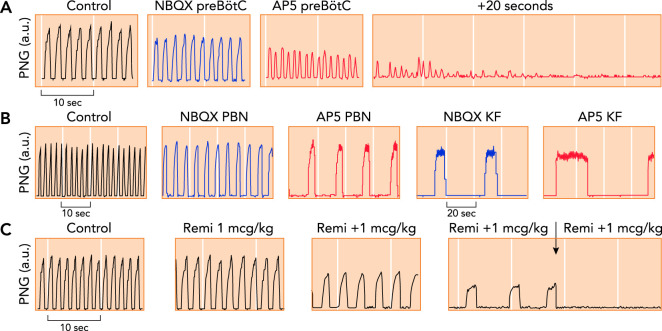FIGURE 3.
Phrenic neurogram tracings obtained in adult decerebrate rabbits in vivo with Pco2 constant
A: antagonism of glutamate receptor function in the preBötzinger Complex (preBötC) through local microinjection of the AMPA receptor antagonist NBQX (blue) and the NMDA receptor antagonist AP5 (red) caused tachypnea with decreased peak phrenic amplitude, followed by apnea (25). B: antagonism of glutamate receptor function in the parabrachial nucleus (PBN) and Kölliker-Fuse nucleus (KF) through local microinjection of NBQX (blue) and AP5 (red) caused severe bradypnea, whereas peak phrenic amplitude was only little decreased. Complete apnea was never observed (116). Please note the different time scales. C: repeated intravenous boluses of the mu-opioid agonist remifentanil (Remi; 1 mcg · kg–1 bolus–1) caused increasing bradypnea due to prolongation of inspiratory and expiratory phase duration. The fourth bolus resulted in apnea (arrow). Remifentanil also substantially depressed peak phrenic activity (123), suggesting an effect on both the PBN/KF and the preBötC.

